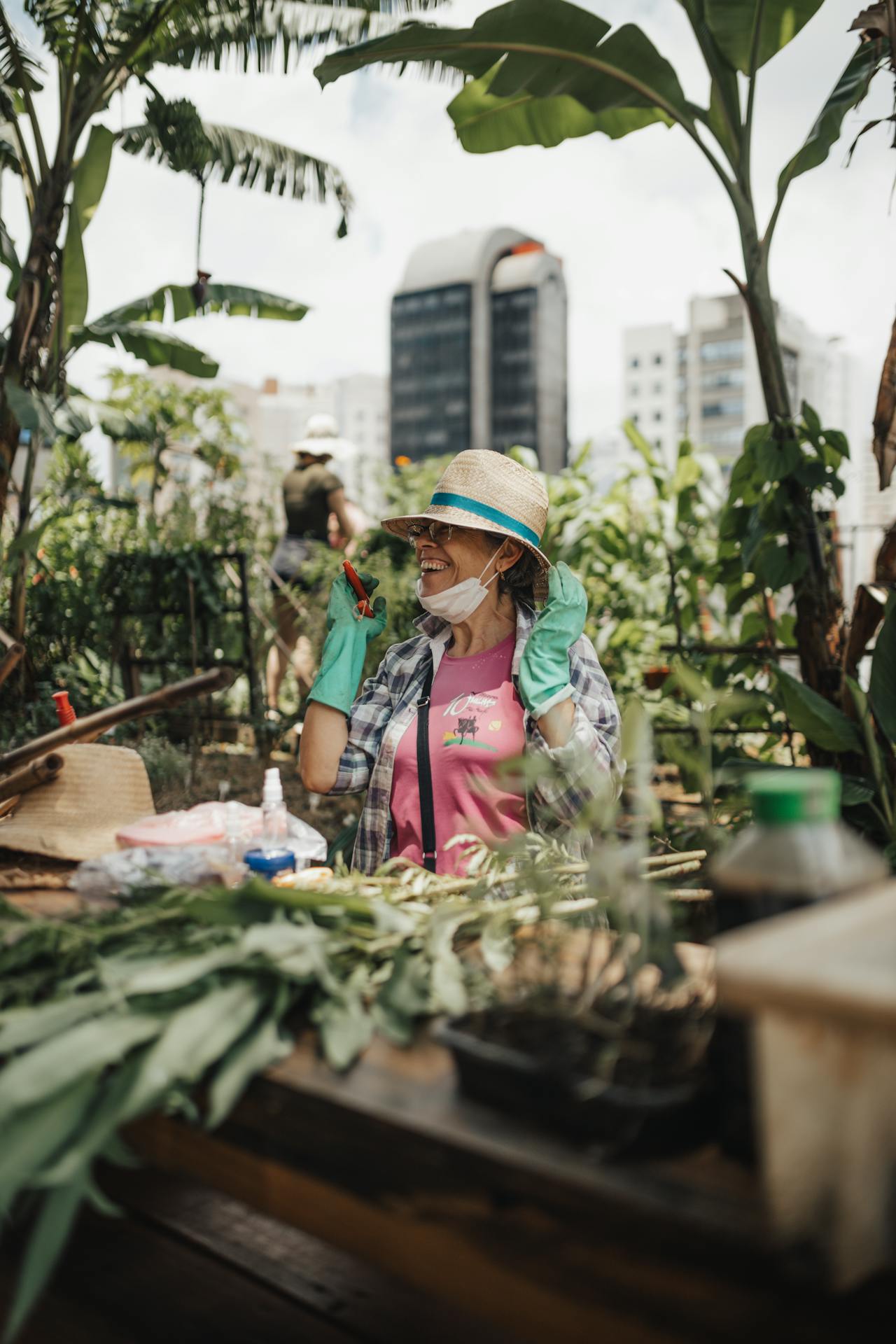How Urban Farms Are Reducing Food Deserts
 In cities like Las Vegas, some neighborhoods sit more than a mile from the nearest grocery store. In these cases, fresh produce isn’t just a health issue — it’s a luxury. Areas that lack access to nutritious, affordable fresh produce are known as food deserts. They affect thousands across the country, but a quiet revolution is underway — urban farms are proving they can reduce food deserts, transforming vacant lots into lifelines.
In cities like Las Vegas, some neighborhoods sit more than a mile from the nearest grocery store. In these cases, fresh produce isn’t just a health issue — it’s a luxury. Areas that lack access to nutritious, affordable fresh produce are known as food deserts. They affect thousands across the country, but a quiet revolution is underway — urban farms are proving they can reduce food deserts, transforming vacant lots into lifelines.
Why City Farming Is on the Rise
You’ve likely seen the urban farm trend — raised beds popping up on sidewalks, herbs growing in old bathtubs, even chickens clucking behind chain-linked fences in the heart of the city. This is about more than aesthetics or even community spirit — it’s about survival and food sovereignty.
Across America, micro-farming is gaining traction as a response to broken food systems. These small, hyperlocal farms increase vegetable consumption in low-access neighborhoods, improving the lives of locals. In neighborhoods where fresh produce isn’t available or affordable, people often rely on takeout meals and processed meals. Most children consume less than a serving of vegetables daily because of a skewed food system.
The benefits of urban farming stretch beyond nutrition. Sustainable city gardening systems can lead to:
- Food security: Fewer miles between farm and plate means more reliable access regularly and during emergencies.
- Lower prices: Local production reduces dependence on high-cost supply chains.
- Cultural preservation: With more say in what produce is available to them, communities can choose to honor regional cuisine by growing vegetables like onions, celery and bell peppers, which make up the Creole “holy trinity” and are a staple in Southern cooking.
Local plots can supply essential ingredients while preserving flavor and identity in communities disproportionately impacted by what many are calling “food apartheid” — a term coined to reflect the systemic roots of nutritional access inequality.
What the Numbers Say
A 2020 study suggested that 50% of Baltimore is a food desert. A follow-up survey represents some improvement, with 28% of residents experiencing food insecurity in 2024. With urban agriculture initiatives, more city lots and rooftops have been converted to vegetable gardens, yielding 43,000 kilograms of fresh produce each growing season.
These city gardens can help bridge the gap between local grocers and community markets. They allow residents greater freedom to purchase affordable vegetables, fruits and eggs for a healthier, more organic diet that helps combat diabetes and other health conditions.
The potential of urban agriculture is barely tapped. According to the USDA, city gardening already produces 15%-20% of the world’s food supply, and locally grown fresh produce can reduce household spending on groceries, especially in low-income neighborhoods.
Tackling Food Deserts, One Lot at a Time
A shortage of nutritional options affects communities all over the country, particularly low-income households that lack nearby grocery stores and have limited transportation. Small grocery stores can’t always fill the gap with their limited resources and lower profit margins.
Urban farms and markets can step up. Community gardens become a reality when organizations and governments help with zoning, grants and logistics technology. In Las Vegas’ James Gay III Park, climate-controlled shipping containers help cultivate diverse crops. AI technology monitors and automates irrigation and temperature control processes to maximize output — even in limited spaces — while reducing waste and watering costs.
The result is affordable, healthier food in neighborhoods that need it most. The area where the park now stands had been closed, but now it’s a thriving community-run garden. Residents are within walking distance of a fresh produce market where they can buy kale, peppers and tomatoes. Children learn where food comes from, and neighbors can trade recipes, keeping local and cultural cuisines alive.
What Makes Urban Farms Work
For city growers to truly reduce food deserts and address broken nutritional systems, they must be resilient. These are the key ingredients in a successful urban farm.
1. Community Involvement
Farms led by residents create stronger ties and a lasting impact. Baltimore’s urban farming model emphasizes farmer training and nutritional equity advisory roles for locals, not just outsiders, avoiding the exclusionary pitfalls of some gentrification greening projects.
2. Government Support for Policy Changes
Tax incentives, zoning law updates and funding for alternative food networks help community farms survive. More grocery stores may not automatically change already impacted eating habits. However, when the community has access to urban farms and education based on local diets, there are measurable successes.
3. Attention to Cultural Needs
Urban agriculture supports food-related cultural practices, such as growing collard greens and sweet potatoes in regions where these are food staples. What is grown in each city matters. People eat what they know, and residents are more willing to invest in produce they are familiar with and know how to prepare.
The Power of Local Produce
Food production is about building agency, reminding people they can be part of the food system, not just dependent on it. It also reconnects locals with the work behind what they eat. The connection makes people more mindful of waste, willing to try new vegetables and interested in nutrition.
Projects like composting initiatives involve residents, help reduce food waste and produce organic fertilizer for healthier produce. Local restaurants can also benefit as they don’t have to travel long distances and produce more emissions to source fresh, organic produce like herbs and greens. This means they have more menu options, attracting locals and visitors. The benefits of urban farming aren’t just ethical — they’re economical, too.
You don’t need a green thumb to support city agriculture initiatives. You can get involved by shopping at local markets, volunteering or donating to urban growers, supporting policies, saving organic scraps for composting and spreading awareness of the importance of food equity.
From Food Deserts to Nutritional Oases
Reducing food deserts isn’t a dream. It’s already happening — plot by plot, seed by seed. With communal will, policy support and innovative tools like climate-controlled containers for growing diverse crops, these city farms can turn underfed neighborhoods into vibrant, self-sufficient food ecosystems.
That means more kids are eating fresh greens, grandparents are passing down recipes, and cities are waking up to the smell of homegrown herbs in their breakfast. Those results are something worth growing.


